20 Little Known Facts About the Titanic
The RMS Titanic was an ambitious endeavor intended to revolutionize
commercial sailing with the greatest of opulence. Rather, the vessel struck an
iceberg on 15th of April 1912 and sank to the bottom of the North Atlantic
Ocean. It served as a testament to the fallibility and short sightedness of
human nature.

The tragedy fascinated the world both at the time of the disaster
and in the many years that followed. Remarkably, even with the endless interest
in the accident and all that is commonly understood about the event, there are
still many surprising facts about the ship and its disaster that are largely
unknown.
20) As the Lifeboats Were Filled it was Women, Children and DOGS First
It’s well known that the Titanic wasn’t equipped with enough lifeboats to
save all the ship’s passengers. Worse still, a number of the boats weren’t
filled to their capacity – Lifeboat #1 had only seven crew members and five
passengers, so only twelve of the potential 40 seats were filled.
Photograph of Rescued Passengers
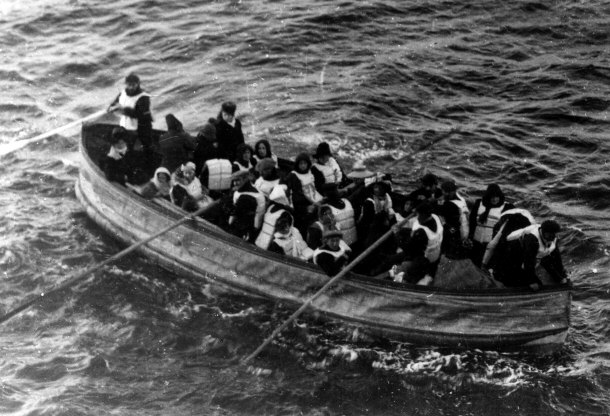
Even more
ridiculous is the fact that at least three seats on various lifeboats were taken
up by dogs, with the rich passengers who boarded the safety boats valuing the
lives of their pets above those of fellow human passengers.
19) The First Victim of the Titanic was the Last to Receive a Headstone
Samuel Scott was a fifteen year-old who had worked on the Titanic. He holds
the unfortunate distinction of being the very first person to have died in
association with the ship. He was killed in 1910. While helping build the
vessel, he received a skull fracture that led to his death.
Grave of Samuel Scott in Belfast City Cemetery, Ireland
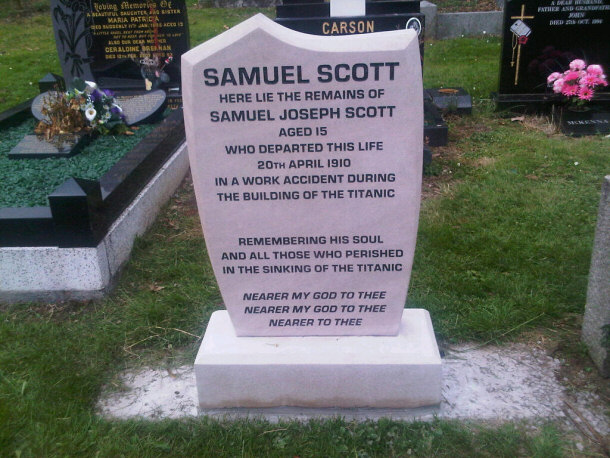
As a young worker
his death wasn’t considered particularly significant, especially in contrast to
the disaster that would later befall the Titanic. For over 100 years, Scott’s
grave lay unmarked at Belfast City Cemetery. Ultimately, he was the last victim
of the Titanic to receive a headstone.
18) Edward John Smith was an Inappropriate Captain
Edward John Smith was the man who captained the Titanic. While he had
acquired more than 35 years of experience on the sea, he wasn’t the most
appropriate captain for the ship. He had worked for the company that owned the
Titanic, the White Star Line, for over 25 years and he had intended the voyage
across the North Atlantic to be his final job for the company. Despite his
experience, however, Smith’s expertise related to captaining sail ships and
steam ships.
Edward J. Smith's White Star Personnel Photograph
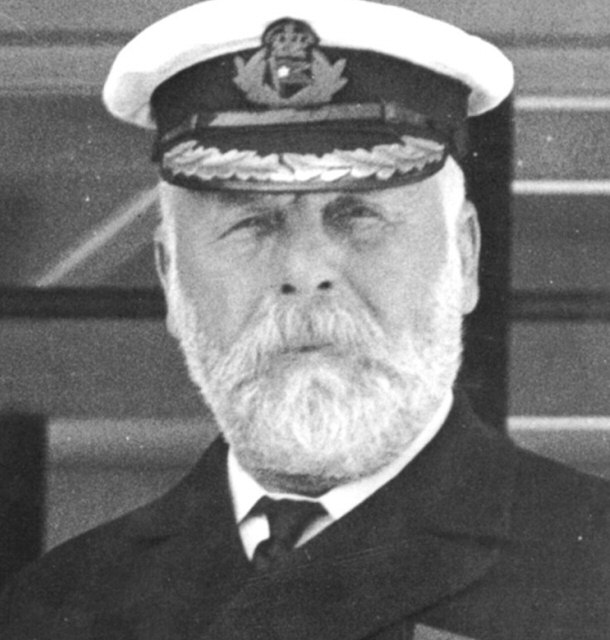
He had never been in control of anything like the Titanic. There
are conflicting accounts in regards to his actions as captain of the Titanic as
the ship went down. While he went down with the vessel, some reports claimed
that he was panic-stricken and hardly embodied the nobility expected of a
captain under pressure. Far from a bad person, it appears that Smith was just
way in over his head and ill-equipped to lead in a devastating situation.
17) An Elderly Couple Depicted in the ‘Titanic’ film Were a Real Couple
One scene in James Cameron’s ‘Titanic’ (1997) depicted an elderly couple, who
opt to die together. The scene was based on the real life story of Ida and
Isidor Straus, who were the owners of the store Macy’s. The couple were
inseparable in life and this was no different when they faced death. The
husband and wife actually made it to the lifeboats in time to board one of them.
However, Ida would not get in, refusing to be separated from her husband.
Isidor and Ida Straus
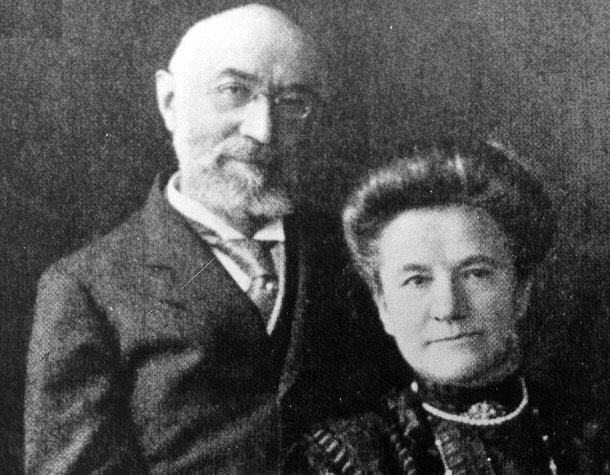
In
response, Isidor was given the opportunity to board the lifeboat, but he too
declined and alternatively gave his spot to his wife’s maid. Having resigned
themselves to certain death, the Straus’ reportedly made their way to a couple
of deck chairs where they calmly sat, holding one another’s hands until they
were washed away together by a large wave. There’s a memorial on the main level
of the Manhattan Macy’s Department Store, commemorating the couple.
16) The Titanic Sank Because Conditions Were Too Good
There’s some debate as to exactly what happened on the night that the Titanic
sank. The general consensus is that the iceberg was spotted late and that the
captain opted to smash through it, believing that the iceberg was no match for
the ship. Other accounts have it that the crew didn’t known about the iceberg
until they actually hit it. Whatever actually happened, one fact is clear – crew
members saw the iceberg all too late. This wouldn’t have been the case were it
not for the freak conditions of the night. While most boats that fall victim to
the sea do so because of bad conditions, the Titanic was victim to the opposite
scenario. The conditions were perfect. It was specifically the absence of waves
that largely resulted in the Titanic striking the iceberg that sank it. There
was no wind or waves. The water was dead calm. It was also a dark night.
Iceberg Off of Newfoundland
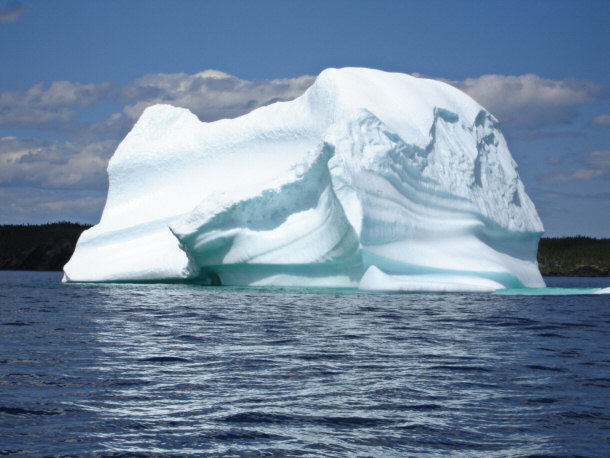
With
the combination of these factors, the iceberg was practically invisible from the
ship. Had there been waves there would have been a bright phosphorescent line
around the base of the iceberg due the tiny plankton dinoflagellates that glow
with the faintest disturbance in the water. On the night the Titanic sank there
wasn’t even the slightest wave to warn the ship’s crew of the iceberg. The
conditions were incredibly rare for the North Atlantic at the time of the year.
On pretty much any other night the iceberg would almost certainly have been
spotted and contact could have been avoided.
15) James Cameron’s Film About the Disaster was more Expensive Than the Boat
Both of the epic projects to build the Titanic and James Cameron’s efforts to
produce a film about the disaster were incredibly expensive. While the boat
itself cost $7 million (approximately $170 million by today’s standard) to
build, the film cost $200 million.
Director of 'Titanic' James Cameron

14) Titanic’s Band Actually Played as the Boat Sank… Then Got Billed
In another scene in James Cameron’s film about the Titanic, the ship’s band
plays while the vessel sinks. The scene was based on another real life event.
While they were under no obligation to do so, the musicians made the decision to
continue performing in attempt to calm the frantic passengers as they rushed for
the lifeboats. None of the band members survived the disaster.
Leaving the Sinking Sea liner
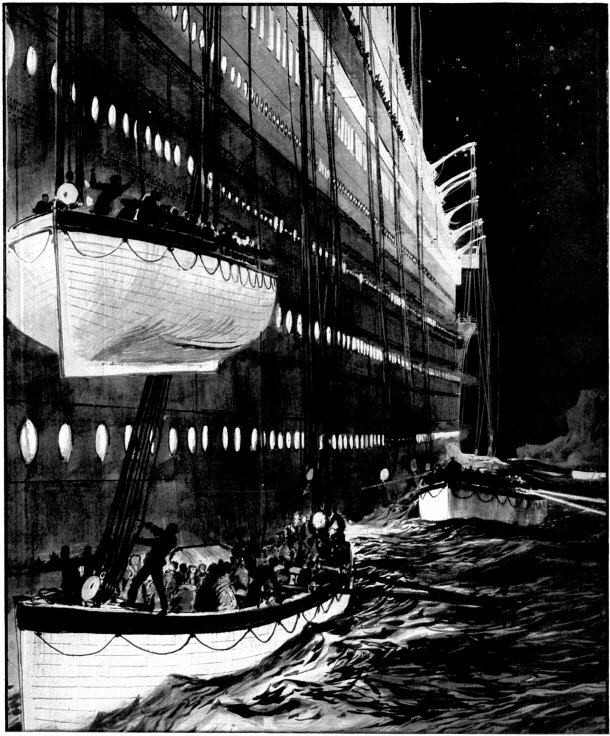
Numerous accounts
confirmed the actions of the musicians. The bodies of only three of the
musicians were ever found. One was John Hume Law. Horrifyingly, two weeks after
the disaster, Law’s father was billed by C.W. and F.N. Black, the employment
firm that had employed the musicians in the group. The bill was for the uniform
that Law was wearing when he died.
13) Similarities with ‘Futility or The Wreck of the Titan’
Fourteen years before the sinking of the Titanic, Morgan Robertson wrote the
book ‘Futility or The Wreck of the Titan’ (1898) in which a ship very much like
the Titanic, named the Titan, hits an iceberg and sinks. Both the fictitious and
real life ship were 800 feet in length, they were both reported to be unsinkable
and encountered disaster in the North Atlantic.
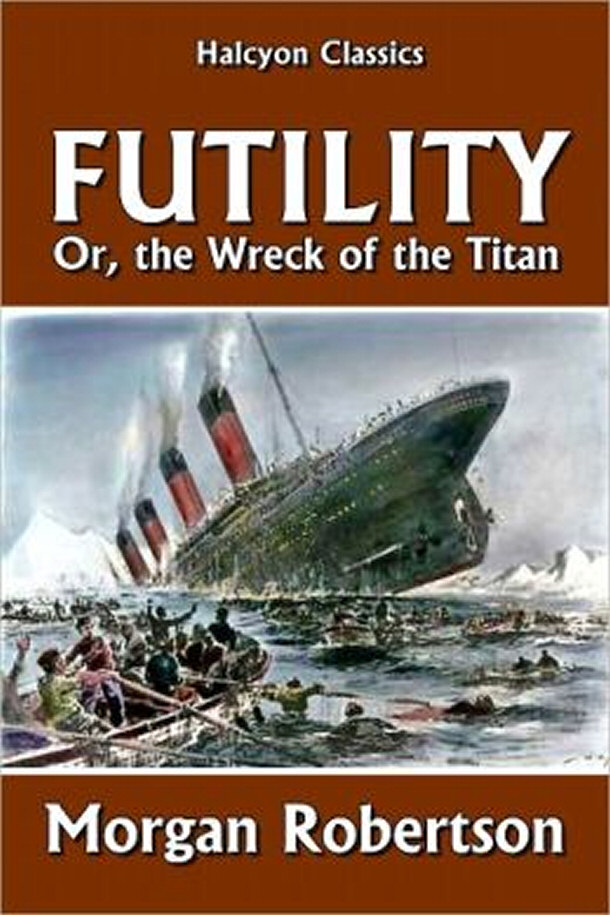
Furthermore, neither boat had anywhere near sufficient amounts of lifeboats
for their 3000 passengers aboard. The only significant difference between the
fictional tragedy and the real life event was that fewer people died during the sinking of the Titanic.
12) A Survivor Was One of the First People Killed by A Car in The U.S.
Douglas Spedden was only six when he was saved from the sinking of the
Titanic. He was one of the first people to board the lifeboats as the ship went
down. Despite his fortune on that night, he was tragically struck and killed by
a car just three years later. His death was one of the first recorded fatalities
involving an automobile in the U.S.
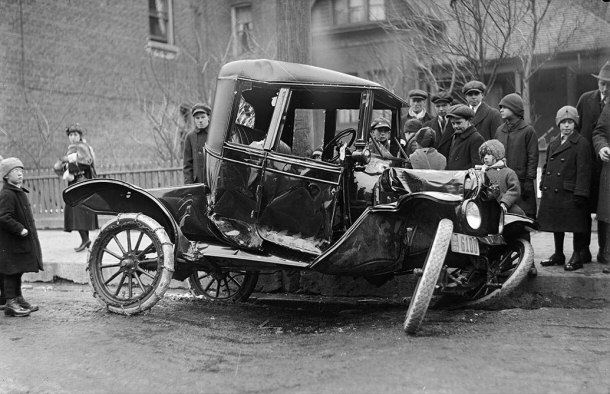
11) The Discovery of the Titanic’s Remains Was Part of a Covert Mission
In 1985, the oceanographer Bob Ballard found one of the most famous
wreckages, the Titanic. The discovery came about as part of a secret U.S.
government mission. Ballard had been employed by the government because of the
submarine he owned, equipped with advanced robotics. Ballard was employed to
determine the status of 2 nuclear submarines – the USS Scorpion and the USS
Thresher – that had sunk back in the 1960s. As the U.S. didn’t want to arouse
suspicion from the Soviets, the government figured that premise of searching for
the remains of the Titanic would serve as an adequate excuse for the increased
presence of U.S. vessels in the region.
Captain Smith's Bathroom - Photo From Ballard's Expedition
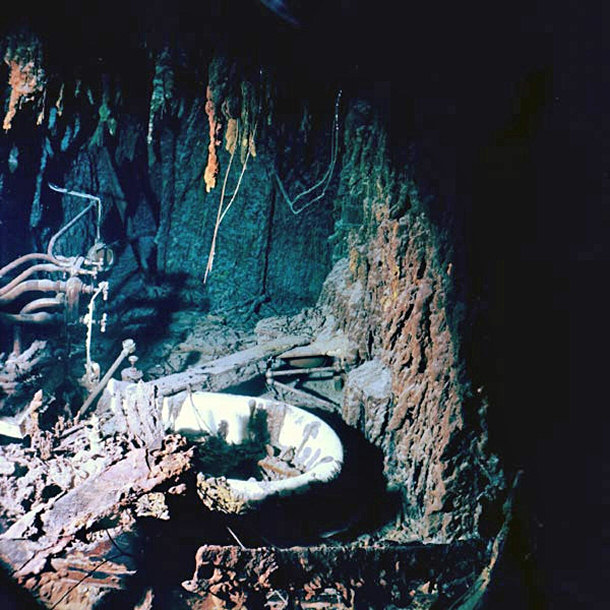
For his services, the U.S. agreed to
provide money for Ballard's endeavor to actually find the Titanic, plus fund a
documentary relating to the search. He only had 12 days of his Navy contract to
find the sunken ship after he’d found the two subs. With what he’d learned in
the locating of the nuclear subs, Ballard was able to employ the same expertise
to find the Titanic.
10) Titanic Wasn’t a Big Deal Until It Sank
Despite the ship’s history that saw it become a household name much of what
is known about the Titanic are myths. Most notable is the fact that the company
behind the Titanic the White Star Line never actually claimed the Titanic to be
“unsinkable”. Furthermore, the Titanic wasn’t ever intended to be the pride of
the company’s fleet. The Titanic’s sister ship the Olympic was. In fact, little
fanfare was actually made when the Titanic set sail. It wasn’t until after the
ship sank that the media paid attention to the vessel.
RMS Titanic and RMS Olympic in Dry-dock
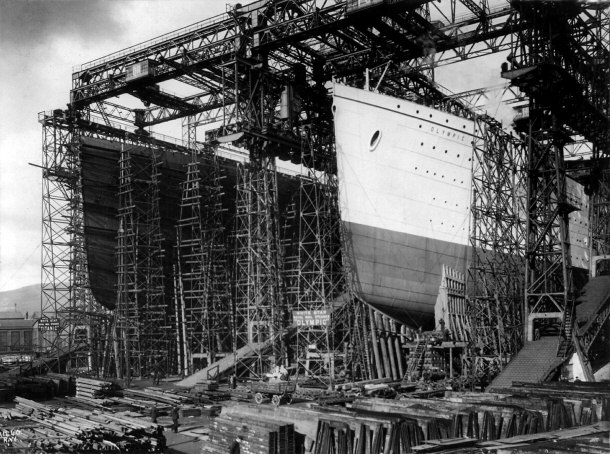
By trialsanderrors [CC-BY-2.0],
via Wikimedia Commons
No actual footage was
taken of the Titanic leaving on its ill-fated voyage. All the purported images
of the event are actually footage of the Olympic with the name scratched out on
the reels, given that both ships were practically identical in design.
9) Numerous Ships Could Have Saved Passengers of Titanic
Typically, while the Titanic was sinking the crew sent out numerous distress
calls to any and all ships that might be nearby. None responded – not until it a
significant amount of lives had been lost. But there actually was a ship that
could have arrived earlier and saved countless lives. The SS Californian was
only around fifteen miles away when the Titanic collided with the iceberg.
Although crew members of the SS Californian spotted SOS flares from the sinking
Titanic lighting up the sky, the distress signals were ignored.
SS California

When the crew
woke up the captain, he dismissed their concerns and went back to sleep. There
was also another ship that likely heard the Titanic’s distress calls, the
Samson. It was only about eight miles away. However, the crew members of this
ship were illegally hunting seals and opted to save themselves from prosecution
than save lives. Ultimately, both the Samson and the SS Californian were
significantly closer that the Carpathia, which was the vessel that ended up
rescuing the survivors of the Titanic – while so many others perished.
8) The Titanic May Have Sank Because of a Mummy
Not only is it believed that the mummified corpse of Priestess of Amun-Ra
who lived around 1050 B.C. was on board the Titanic, but some have speculated
that it may have been the cause of the disaster. As legend has it, after the
mummy was unearthed in the 1890s numerous instances of misfortune befell anyone
who had the corpse in their possession. First, the original owner was so
ill-effected by the mummy that he donated it to the British Museum. There, both
museum staff and visitors encountered mysterious experiences.
Sarcophagus of Amun-Ra

Unconcerned with
the mummy’s reputation – believing that they were just superstition – the corpse
was finally purchased by journalist William Thomas Stead. He claimed to have
concealed the mummy underneath his car, concerned that it wouldn’t have been
allowed onboard otherwise, due to its reputation. Nevertheless, Stead did reveal
that presence of the mummy aboard the Titanic at his last dinner on the night
the ship sank. Whether or not a mummy was indeed on board the Titanic is
debatable. Stead was a pioneer in tabloid journalism, so it remains a mystery
whether he was telling the truth about the mummy or whether he, like any tabloid
journalist, was just making up a good story out of nothing.
7) The Nazis Made an Anti-British Film About the Titanic
When James Cameron produced the film ‘Titanic’ it ultimately went on to be
one of the highest grossing films in the history of cinema. Of course, Cameron
certainly wasn’t the first person to make a film about the disaster. In fact,
numerous films have been made about the ship – some successful. Others were not
so well known. One film that many people aren’t aware of is that Nazi Germany
produced a film about the sinking. ‘The Titanic’ (1943) was piece of
anti-British propaganda. Joseph Goebbels, the Third Reich’s Propaganda Minister
was the mind behind the film’s production.
Movie Poster For the Nazi Propaganda Film 'Titanic'
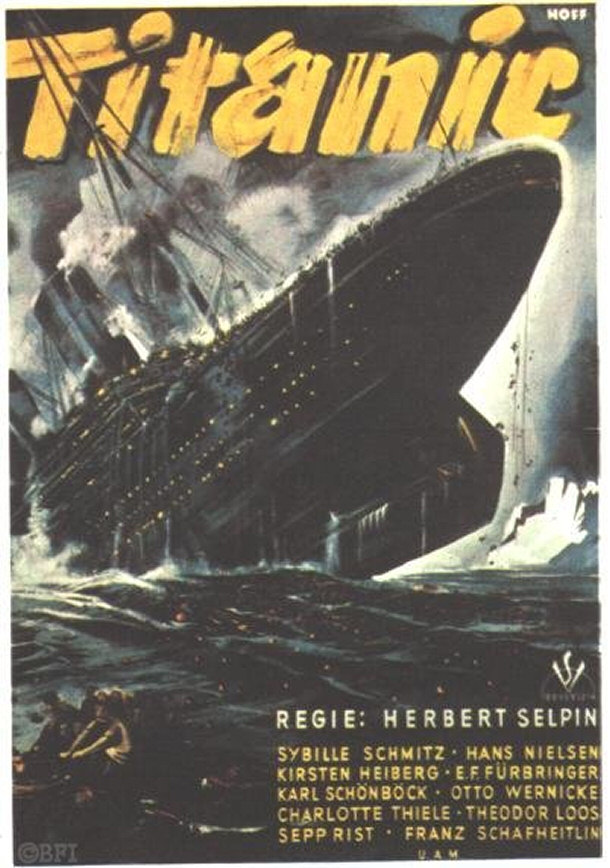
The film depicted the tragedy in an
attempt to satirize and discredit the capitalistic ideals of Britain and
America. The film was originally scheduled to first screen early in 1943 but the
theater that it was to screen at was bombed the night before. It ended up being
shown in late 1943. Ironically, the ship on which the film was shot, the SS Cap Arcona, was later bombed by the British Royal Air Force. The attack caused three
times more fatalities than the Titanic.
6) A Key Could Have Avoided the Titanic Tragedy
Charles Lightoller (30th March, 1874 – 8th December, 1952) was the most
senior member of the crew to survive the disaster. He served as the second
officer on the Titanic after a last minute change in crew that could have
indirectly caused the crash. With the changing of the crew the original second
officer, David Blair, left the ship – taking with him the only key to unlock the
case in which a pair of binoculars were kept.
Charles Lightoller (Left) and Herbert Pitman After the
Sinking
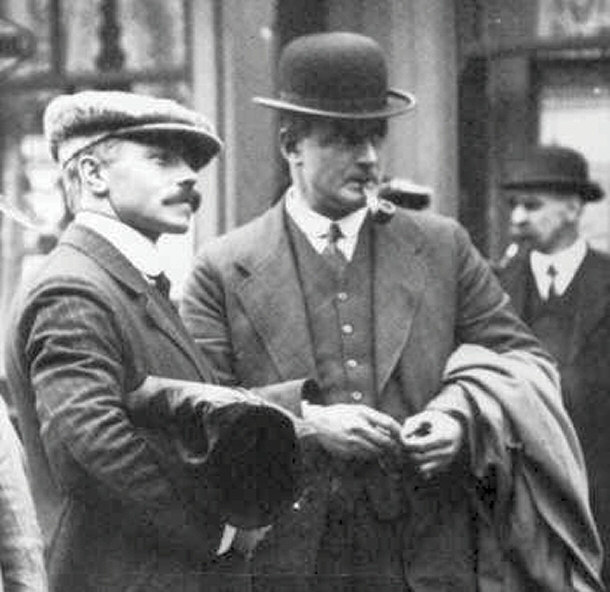
The result of this was that no one
on board the ship had access to binoculars during the voyage; the iceberg
that sank the ship was seen too late. Lightoller had planned to purchase
binoculars when the ship reached New York, as the piece of equipment didn’t seem
crucial at the time. Had the crew had access to a pair of binoculars during the
ill-fated voyage, the disaster could have been avoided and thousands of lives
saved.
5) The Remains of the Titanic Could be Gone Within Twenty Years
Due to recently discovered bacteria that consume rust, experts believe that
the remains of the Titanic could be gone soon. Although the ship has already
lasted over 100 years, the micro-organisms could reduce the wreck to nothing
within fifteen to twenty years.
Alvin (DSV-2) Gets Refitted With a New Bubble Prior To
Exploring the Wreckage of Titanic

4) An A-list Celebrity Survived and Exploited the Tragedy – Just Days After
it Happened
Dorothy Gibson (17th May, 1889 – 17th February, 1946) was a superstar in the
silent era of film. When she dramatically survived the sinking of the Titanic,
production for a film detailing her ordeal – ‘Saved from the Titanic’ (1912) –
began within just five days of the disaster. Gibson co-wrote the script and
played a fictionalized version of herself as she recounted her experience.
Portrait of Dorothy Gibson

Gibson even wore the same clothing that she’d worn during the disaster. The film
was incredibly successful, though some condemned her for not just exploiting the
tragedy but doing it so soon after it happened. It’s speculated that some copies
of the film may still exist, given how successful and popular it was. However,
all known copies of the movie were destroyed in a fire in 1914.
3) Conspiracy Theorists Believe that the Titanic Never Sank
With over 100 years of studies it would seem that the events that surrounded
the sinking of the Titanic are pretty clear cut. Robin Gardiner, however, thinks
otherwise. In his controversial book, ‘Titanic: The Ship That Never Sank?’,
Gardiner details a theory that suggests that the vessel that crashed and sunk
was the Olympic, not the Titanic. The Olympic was the Titanic’s sister ship, and
Gardiner suggested that it had been made up to look like the Titanic and
intentionally sank as part of an elaborate insurance scam. Like every good
conspiracy theory, Gardiner makes the unbelievable sound kind of plausible.
Months before the Titanic disaster, the Olympic had been involved in an accident
with a Royal Navy Warship, incurring significant damage.

As the Olympic was at fault, insurers refused to pay, which cost its owners a
huge amount of money. As the conspiracy theory goes, a plan was hatched to make
the insurer pay up by disguising the damaged and essentially worthless ship as
the Titanic. The ship was then sunk to cash in on the tragedy, while blaming the
disaster on an iceberg. The actual Titanic was then disguised as the Olympic and
utilized for commercial use for the next 25 years. While the overwhelming
majority of Titanic experts deride Gardiner’s theory, conspiracy theorists
embrace it despite the story's entire
lack of likelihood.
2) A Japanese Man Lived in Shame for Surviving the Tragedy
Masabumi Hosono (1870 – 1939) was the sole Japanese survivor on the Titanic.
He was an employee of the Japanese Ministry of Transport, who had been on an
assignment. He was traveling as a second class passenger. He was awoken when
the Titanic hit the iceberg. He reached the deck and found room on one of the
last life boats available. After arriving in the US, the American media dubbed
him the "Lucky Japanese Boy". Japanese media also celebrated his survival – at
least at first. Shortly after appearing in a variety of publications, the public
turned on the survivor, with many regarding him as a coward.
Masabumi Hosono - Sole Japanese Survivor
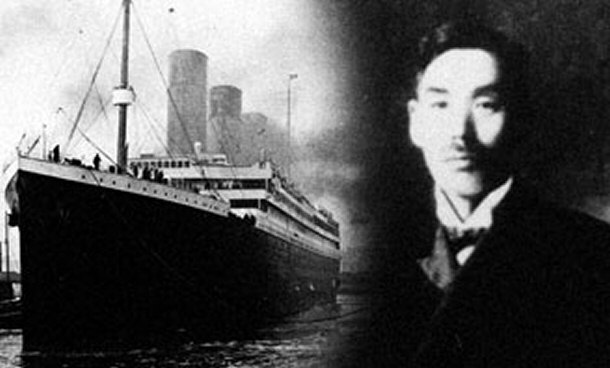
There were even
allegations that he’d disguised himself as a woman in order get on board the
lifeboat. Ultimately, Hosono lost his job and was branded by the media as a
coward for surviving. School textbooks were even produced that defamed him as
dishonorable. This was all due to the cultural attitude in Japan which felt that
Hosono had shamed the Samurai spirit in regards to the notion of self-sacrifice,
which dictated that he should have went down with the boat. Not only did Hosono
live the remainder of his life in great shame, but his legacy went on to sully
his family as well.
1) The Titanic was a Drug Mule
When the Titanic sank a lot of valuable cargo went down with it. Not all of
it legal. There were four cases of opium on board the Titanic. The drugs
belonged to John Jacob Astor IV, whose family had made their fortune largely due
to the sale of opium. Seven years before the ship sank, the U.S. Congress had
outlawed the drug. Despite the law, opium was still widely used, though it was
now no longer easily available.
John Jacob Astor IV
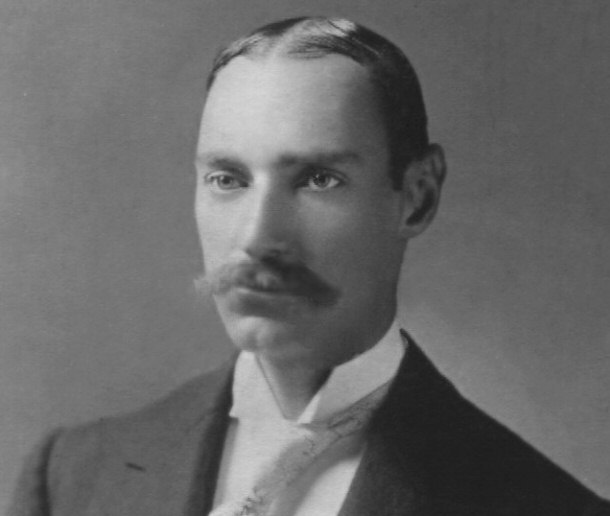
While it certainly wasn’t uncommon for opium to
be shipped to America regardless of the laws, it was in direct and blatant
violation to the U.S. laws. It’s unclear whether officials of the White Star
Line knew of the drugs that were aboard or whether Astor was smuggling them.
Whatever the case was, it was well and truly illegal, with the Titanic serving
as perhaps the most famous drug mule ever.
Conclusion
Even before James Cameron’s film that bought the tragedy of the Titanic’s
maiden voyage to the big screen in remarkable detail like never before, the
disaster fascinated the world at large. As much that is known about the
disaster, chances are that there’s still many more mysteries waiting to be
discovered about the Titanic by an enthusiastic public and the scientific
community alike.
History
Top Lists:
15 Biggest Architectural Blunders
Top 15 Most Horrifying Terrorist Attacks
15 Fascinating Facts About the Vietnam War
Top 15 Amazing Ancient Egyptian Architecture
20 Little Known Facts About the Titanic
Top 10 Most Creepiest Abandoned Places in the World
26 Interesting Facts About Henry Ford
List of 15 Tough Ancient Warriors Through History
List of 15 Notorious Roman Emperors and Empresses
Top 15 Worst Pandemics in History
15 Things That Remained the Same in the Past 100 Years
Top 15 Things China Invented First
Top 15 Greatest Inventors in History
15 Interesting Facts About Abraham Lincoln
10 Inventors Who Stole Their Ideas
15 Stories of Hilarious Medieval Victories
15 Detectives Credited With Solving The Biggest Cases In History
15 Fascinating Facts About the Ancient Pyramids
15 Inventions That Were the Result of a Mistake
15 Famous Stories of Execution
16 Rare Facts About the U.S. Presidency
15 Astonishing Leadership Stories that Ended up Successfully
Informational:
Analysis of the Linear B tablets and Wall Paintings
Aristophanes and Classical Greek Comedy
The First War of Scottish Independence
|